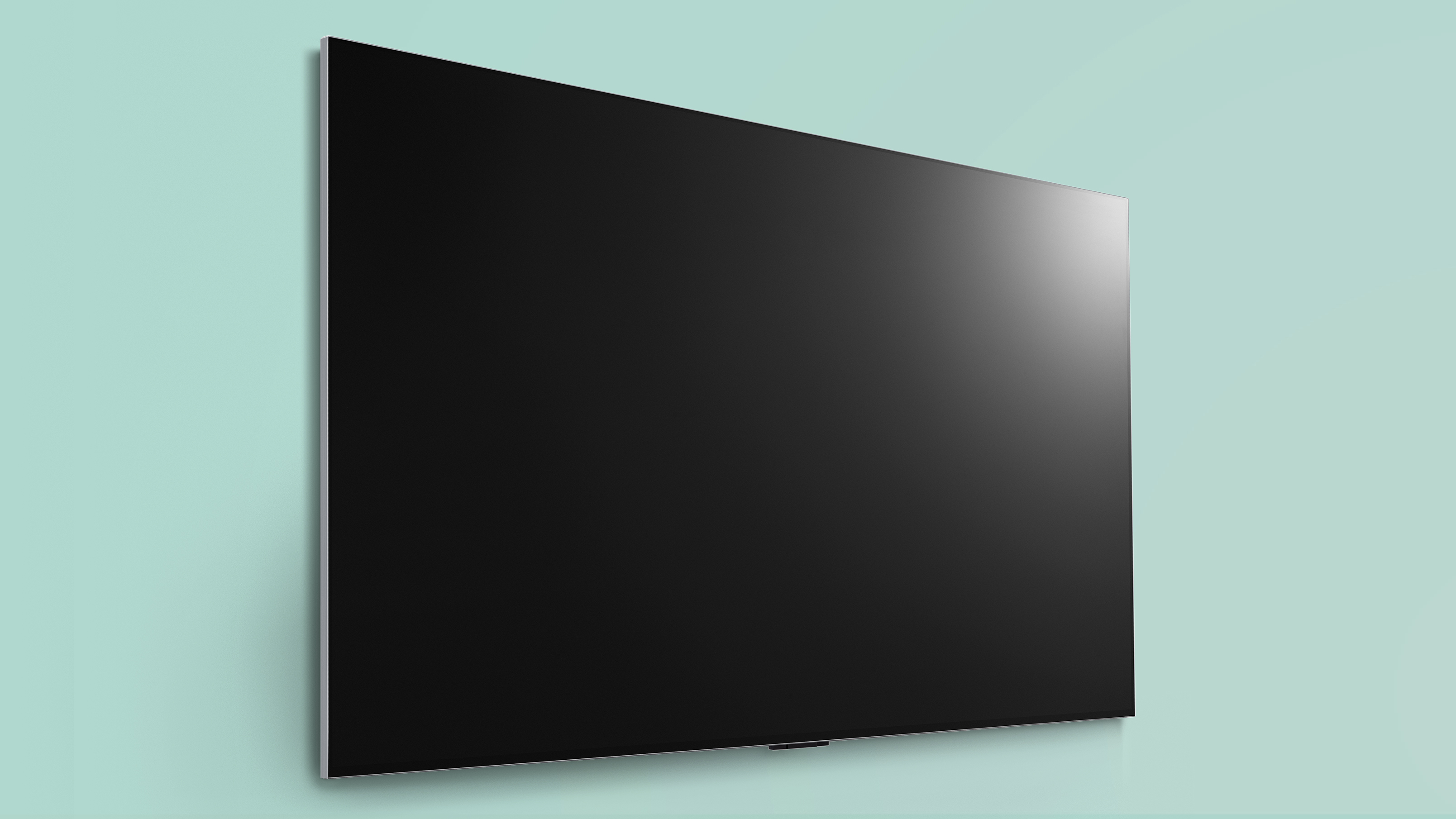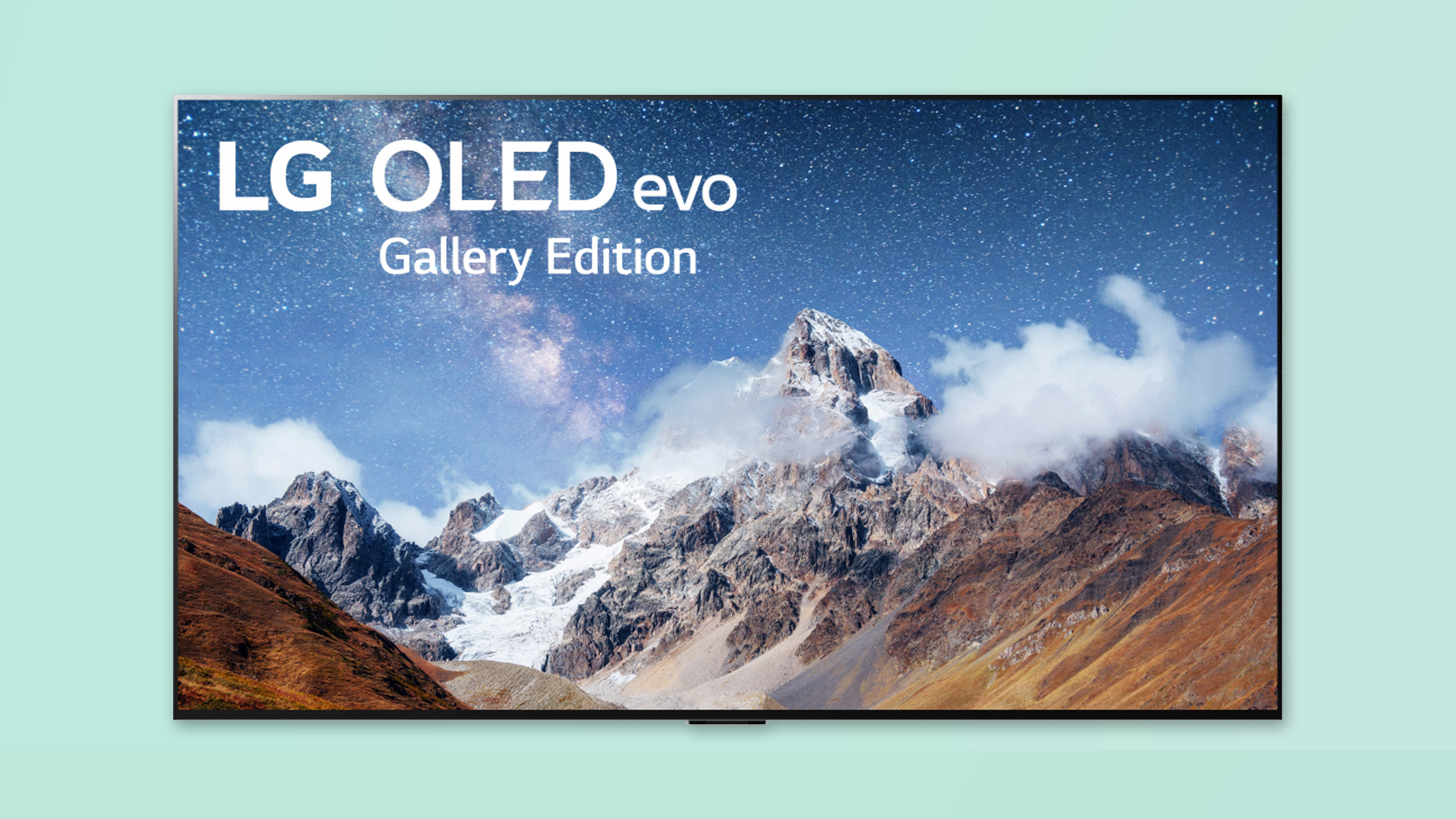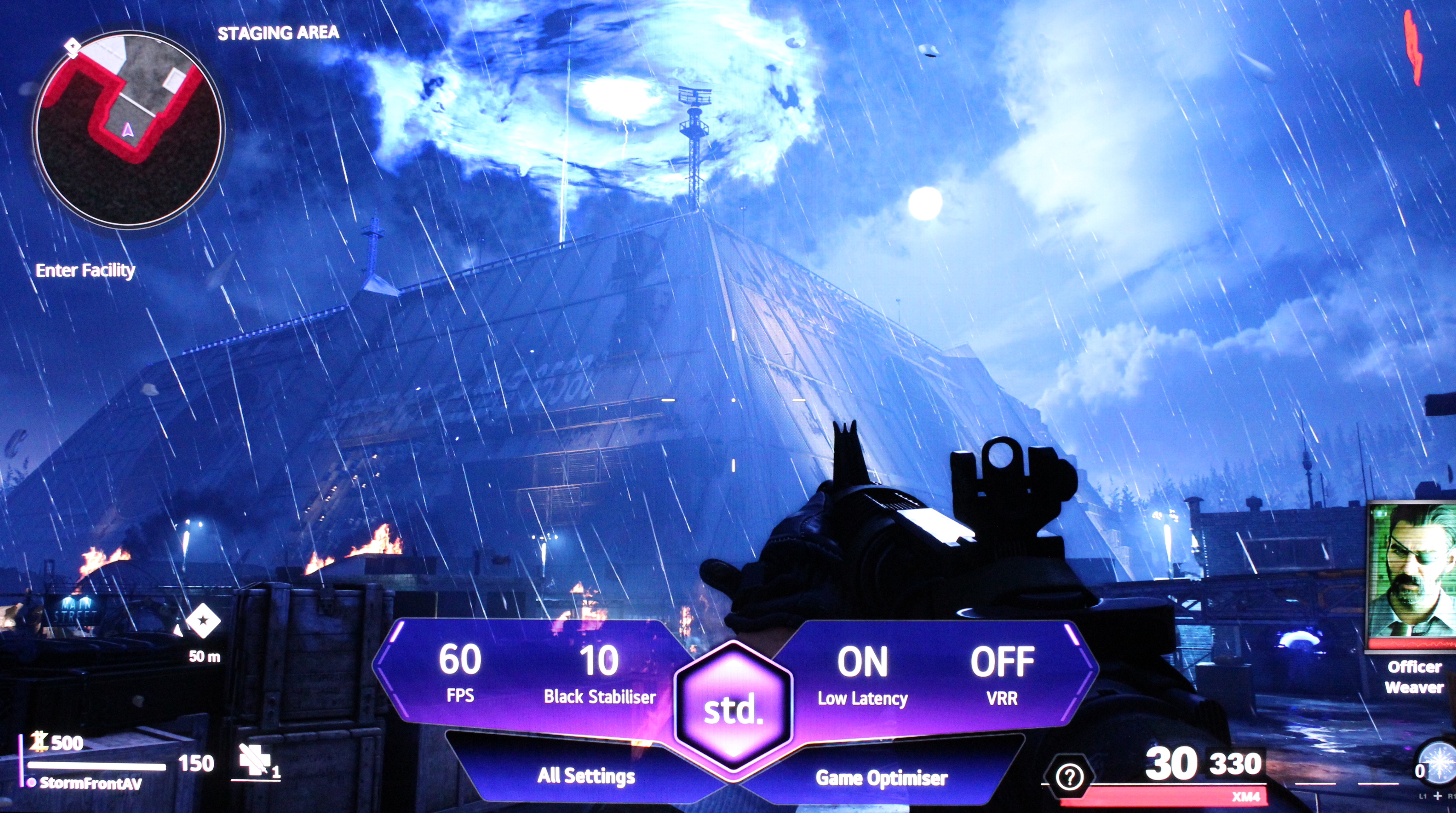LG G2 (OLED65G2) review: the peak of OLED TV quality so far
The LG G2 is the new best OLED TV on the planet, if you're after a wall-mounted display, thanks to a new brighter screen and incredibly advanced image processing



The LG G2 represents OLED’s zenith to date, with cutting-edge image processing, incredibly bright HDR pictures, and exceptional levels of accuracy. Once you add in great sound, extensive gaming features, and a comprehensive choice of streaming services, you’ve got a 4K TV that’s hard to beat.
-
+
Sublime HDR picture
-
+
Dolby Vision and Atmos
-
+
Comprehensive smart platform
-
+
VRR, ALLM, and 4K at 120Hz
-
-
No HDR10+ support
-
-
No regular stand in box
Why you can trust T3

In this LG G2 review, we're looking at the company’s new high-end 4K OLED TV for 2022, which promises to deliver class-leading performance in terms of image accuracy, processing and peak brightness.
And make no mistake, the LG G2 is success in all these areas. A huge one. To achieve these goals LG has included its Alpha 9 Gen 5 processor, and added brightness-boosting technology that delivers new HDR peaks, without sacrificing any of the deep and rich black tones that OLED is famed for.
When it comes to picture quality alone, the LG G2 is absolutely among the best OLED TVs we've ever seen, and it's only more impressive that it comes in a 22mm thick package that looks incredible on the wall.
The inclusion of improved audio processing, extensive gaming features to keep it ahead of the best gaming TVs, plus the latest version of webOS for smart TV features mean that you're getting a set that's basically impeccable across every aspect of its performance. It's truly one of the best TVs on the planet – but it comes at a premium price.
Let's dig into why it's so good – we tested the 65-inch LG G2 model for this review.
LG G2 review: Price & release date
The LG G2 is released in April 2022 but is still a brilliant choice even now.
The LG G2 is available in 55-inch, 65-inch, 77-inch, 83-inch and 97-inch models which is the first OLED TV even to be made at that size.
Get all the latest news, reviews, deals and buying guides on gorgeous tech, home and active products from the T3 experts
The 55-inch OLED55G2 costs $2,199/€2,499, the 65-inch OLED65G2 costs $2,999/€3,599, the 77-inch OLED77G2 costs $3,999/€5,999, and the 83-inch OLED83G2 costs $6,499/€8,999.
These are, obviously, very premium prices. It's a step up over the price of the LG C2, which is the more mid-range model from LG's 2022 OLED line-up – the 55-inch LG C2 costs $1,799, for comparison. We've got an LG C2 vs LG G2 comparison if you want to know more about the differences between the two models.
The LG G2 is more in competition with the likes of the Sony A95K and Samsung S95B when it comes to high-end OLED TVs, both of which use a different QD-OLED panel technology: here's a QD-OLED vs OLED explainer. We've also got a comparison between the LG G2 and Sony A95K with more explanation of their respective features.
In that context, the LG G2's price isn't out of line with the competition at all – even the best non-OLED TVs, such as the Samsung QN95B, cost this much.

LG G2 review: Features & what's new
The LG G2 uses the company’s latest OLED panel technology, with a resolution of 4K and support for HDR. This panel contains reformulated materials with more precise wavelengths for an expanded colour gamut, and was also used in the LG G1. However, the LG G2 also includes a technology called Brightness Booster Max, which employs heat dissipation technology to increase the overall luminance by 30%.
The G2 boasts the new Alpha 9 Gen 5 processor, which uses AI-enhanced deep learning to improve the upscaling of lower-resolution content to look great in 4K. This upgraded processor also applies genre detection, scene detection, and object and background enhancements to make all SDR and HDR content appear more detailed and life-like. LG calls the combination of its new panel and this chip 'OLED Evo'.
The TV runs LG’s smart platform – webOS 22. This has been tweaked to make interaction more intuitive, allow for greater customisation, and provide better recommendations. In terms of choice, all the major video streamers are present and correct, including Freeview Play in the UK.
There’s support for most high dynamic range formats, including HDR10, hybrid log-gamma (HLG), and Dolby Vision IQ with Precision Detail. LG claims it is the only manufacturer that currently has sufficient processing power to offer Precision Detail, which pulls out more information from Dolby Vision HDR content. While there’s no HDR10+ support, that’s hardly a great loss – it's less widely supported than Dolby Vision.
The G2 is an awesome TV for gamers, thanks to four HDMI 2.1 inputs that support 4K at 120Hz, and VRR – including Nvidia G-Sync and AMD Freesync, as well as the HDMI version. There’s also ALLM, which automatically switches to the low latency Game Optimiser mode when a console is detected. The Game Optimiser has been expanded to offer more features, and the input lag is an incredibly low 9.4ms.

The LG G2's Game Optimizer screen in action, making it easy to adjust settings as needed.
LG G2 review: Picture quality
The LG G2 delivers all the performance benefits you’d expect from an OLED TV, with inky blacks, near-infinite contrast ratios, and incredibly wide viewing angles. However, the Brightness Booster Max technology really pays dividends to set it apart from the crown, hitting nearly 950 nits of peak brightness.
And that's not in some super-vibrant viewing mode that designed to pump things up, which is how some TVs reach their peak brightness numbers. That's in Filmmaker Mode, which disables any contrast-boosting trickery, with a 10% window, so enough for some real highlights in a scene.
Once you combine this with OLED’s pixel-precision and LG’s class-leading dynamic tone mapping, you have some of the best HDR images we’ve ever seen. The colours are also bright and vibrant, with the LG reaching 99% of the DCI-P3 colour space used for HDR.
The G2’s upgraded dynamic tone mapping really delivered the goods in our tests, taking advantage of the increased brightness and improved processing to produce impactful HDR images with specular highlights free of clipping, deep blacks and detailed shadows that weren’t crushed.
In more general terms, the overall screen uniformity was excellent, with no signs of banding, dirty screen effect or colour tinting anywhere on our review sample. Reflections are also handled well, and the overall colour accuracy was excellent, especially in the Filmmaker Mode.
When you combined these attributes with a cutting-edge processor like the Alpha 9 Gen 5, you get sharp and detailed images regardless of the original resolution of the content. The motion handling is also impressive, although purists will want to turn TruMotion off for film-based material.
LG G2 review: Sound quality
As an added bonus to the wonderful picture quality, the G2 doesn’t just look good, it also sounds great. The Alpha 9 Gen 5 processor uses its increased processing power to apply multi-layer deep learning to an audio signal, adding virtual rear and overhead channels to create an immersive audio experience.
This processing not only produces a greater sense of envelopment, but also pulls dialogue out of the mix to make it more intelligible, which is often very useful.
Obviously, a thin TV is not going to deliver the bass you might want from a home theatre setup, and the virtual surround channels can't match the real thing, so for the full movie experience you'll still want one of the best soundbars for LG TVs – but you won't need one right out of the box. What the TV alone offers is impressive.

The LG G2's remote, which is one of the best in the biz.
LG G2 review: Design & usability
The LG G2 uses the latest Gallery Edition design, with a narrow bezel and non-chamfered chassis that’s only 22mm deep from top to bottom. The look is clean and simple, with an attractive metal trim around the outer edge, and a slight black border around the screen. The construction also uses a composite fibre material that’s stronger, lighter, and more eco-friendly.
It's a great choice for anyone wanting a big and bright OLED TV with a touch of high-end class. The G2 is primarily designed for wall mounting, and comes with a special dedicated bracket that mounts it flush to the wall that purpose. If you don’t want to wall mount, you can buy LG's optional floor stand or feet – or simply pick up a compatible VESA stand instead.
The Magic Remote is the same as last year, and remains the best controller on the market, with an onscreen pointer that makes navigating the TV intuitive and fun. There are direct access buttons for Netflix, Prime Video, Disney+ and Rakuten TV, along with activation buttons for the built-in Alexa and Google assistants. There’s also a microphone for voice interaction.
LG G2 review: Verdict
The LG G2 is a superb OLED TV that delivers exceptional HDR performance with bright specular highlights, and incredibly accurate dynamic tone mapping. The new Alpha 9 Gen 5 processor is state-of-the-art, and the Brightness Booster Max does exactly what is says on the tin.
The result is a 4K TV that can produce highly detailed and natural-looking images, while also taking full advantage of OLED’s deep blacks, class-leading contrast and wider viewing angles.
The G2 is the complete package, because it not only looks amazing, but also sounds good thanks to highly effective audio processing. The design is ultra-slim and stylish, the webOS 22 smart platform is comprehensive, and the Magic Remote makes navigation intuitive.
The extensive gaming features and incredibly low input lag make this a great TV for gamers. About the only feature missing is HDR10+, but otherwise this awesome TV should be at the top of your wish list.
LG G2 review: Also consider
As mentioned, the LG C2 is probably the single biggest competitor here, since you can get most of the same features – the same connectivity and processing – in a cheaper package. And it comes with a stand! But it can't go as bright, so the G2 remains the pinnacle of both design and image quality in LG's range.
Sticking with the premium end of the OLED TV line, the Samsung S95B is the one to watch, with its Quantum Dot OLED screen (which may be even brighter than the G2, and with a wider colour range), and Samsung's own advanced image processing. It only comes in 55-inch and 65-inch sizes, though, and is a little pricier than the LG G2, so you may well prefer the LG ultimately.
Another option for a very bright OLED TV with a unique design aimed at aesthetic brilliance is the Philips OLED+986 (which isn't available in the US, we should note). Using an OLED Evo panel, you still get incredible HDR performance, and it supports HDR10+. But it comes with a built-in sound system designed to totally replace the need for one of the best soundbars – it's Dolby Atmos sound tuned specifically for that exact TV, so positional audio matches perfectly what's happening on-screen. It's less good for gaming than the LG G2, it's only available at 65 inches, and it's designed to live on its own stand rather than be wall mounted – but it's a superb all-in-one TV for a classy living space.

Steve Withers is a professional calibrator and freelance journalist who regularly contributes to T3, reviewing audio and video products, and writing articles. Steve has been writing about audio and video products for over ten years and, along with T3, he also contributes to TechRadar, Trusted Reviews, Expert Reviews, AVForums, Pocket-lint, Home Cinema Choice, and Wired. Steve is Level 2 certified with THX, the Imaging Science Foundation (ISF) and the Home Acoustics Alliance (HAA). As such, he remains abreast of all AV technology developments and the latest industry standards as we transition into a new era in home video and audio.